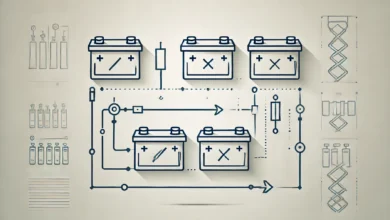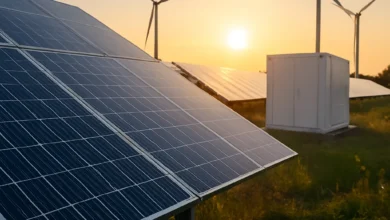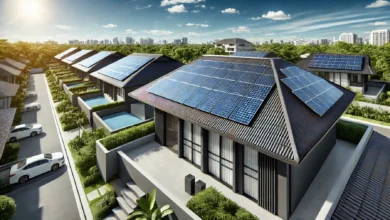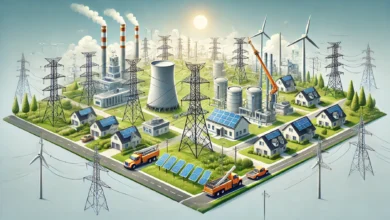Thin-Film Solar Panels | Thin and Lightweight
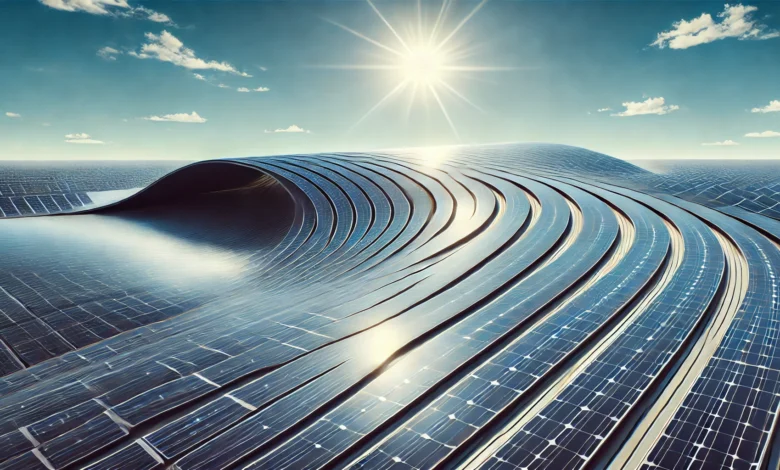
Solar technology continues to progress, and thin film solar panels are becoming a favorite alternative for an array of applications. As a renewable energy option, thin-film’s lightweight makeup, versatility and low-cost make it an ideal option for home, business, and industrial users. Throughout this guide we will cover the information you need to get started with thin-film panels; including what they are, the pros and cons, costs and the best ways to use thin-film panel technology.
Contents
What are Thin Film Solar Panels?
Thin film solar panels are manufactured when one or more layers of photovoltaic material are deposited onto a substrate. Whereas standard silicon-based panels are thick and rigid, thin–film panels can be manipulated into different dimensions and are lightweight and flexible.
There are three main types:
- Cadmium Telluride (CdTe): The most widely used of the thin film technology, it has low-manufacturing costs and reasonable efficiency.
- Amorphous Silicon (a-Si): Made from non-crystalline silicon and typically used for small solar applications, calculators, portable solar applications, etc.
- Copper Indium Gallium Selenide (CIGS): far higher efficiency than other thin-film alternatives, it may be attached to flexible surfaces.
If you’d rather read about standard panel technologies first, check out our guide about Monocrystalline Solar Panels.
How Do Thin-Film Panels Work?
Like traditional photovoltaic panels, thin-film panels absorb sunlight and convert that light into electricity. The photovoltaic layers of thin film solar panels are extremely thin; in fact, a thin film solar panel may have active material that is up to 300 times thinner than a silicon wafer panel.
They create energy when direct sunlight strikes the active material, the active material releases electrons and creates a flow of energy that can be harnessed and used to power homes, buildings or devices.
They are flexible so they can be constructed and placed on non-traditional surfaces, like curved roofs, carports, facia of the building or even portable solar charger.
Benefits of Thin-Film Technology
- Lightweight and flexible: Easy to install, especially when there is a need to work with structures that are unable to bear much weight.
- Various Applications: They can be used in different applications such as buses, RV’s, boats, and military applications.
- Better Low-Light and High Temp Performance: In a shady environment thin film performs better than crystalline panels do, and they perform better in high temperatures as well.
- Lower Manufacturing Costs: They are made at a lower cost and they can be manufactured in large quantities compared to traditional panels.
- Aesthetics: They look much sleeker and are uniform compared to traditional panels, they blend nicely with modern structures.
Wondering how they stack up against polycrystalline options? See: Polycrystalline Solar Panels: Features, Benefits, and Costs.
Disadvantages to Consider
- Lower Efficiency: Thin Film is typically rated 10% – 13% vs. 18% – 22% for monocrystalline panels.
- Space Requirements: Thin film requires a larger area to produce the same amount of energy.
- Shorter Lifespan: Typical lifespan is 10-20 year lifespan versus 25+ years for traditional panels.
- Recycling Issues: Some materials like cadmium require special recycling procedures.
Typical Costs in 2025
| System Size | Average Installed Cost (After Incentives) |
|---|---|
| 4 kW | $7,200 – $8,800 |
| 6 kW | $10,500 – $12,600 |
| 8 kW | $13,800 – $16,500 |
| 10 kW | $17,000 – $20,500 |
Comparison with Traditional Panels
| Features | Thin Film | Monocrystalline | Polycrystalline |
|---|---|---|---|
| Efficiency | 10% – 13% | 18% – 22% | 15% – 17% |
| Cost | Less | More | Medium |
| Flexibility | Flexible | Rigid | Rigid |
| Best Use | Curved/portable surfaces | Flex and rigidity | Poor buildings |
Ideal Applications
- Commercial Rooftops with easily accessible roof space.
- Portable Solar Chargers, RVs.
- Building-Integrated Photovoltaics (BIPV).
- Farms, Aquaponics, where lightweight is a must.
- Temporary events (i.e. tents, etc…).
Is Thin-Film Solar a Good Option for You?
If you have space, need flexible or lightweight installations, or are very particular about aesthetics then this option may make sense. If you are limited on space and all you care about is to squeeze every ounce of energy from what you could fit on your roof, then the traditional monocrystalline panels are more suited.
If you are planning on a more complete energy plan you may want to look into Ways to Power Your Home with Renewable Energy.
Frequently Asked Questions (FAQ)
How long do thin-film panels last?
Typically, a thin-film panel will last 10-20 years; this is slight less than crystalline solar panels.
Are thin-film solar panels good for residential home use?
Yes, especially for homes that have large amounts of square footage on the rooftop or atypical home that require specialized installation.
Are thin film solar panels cheaper than traditional panels?
Typically, yes, although you will typically need more panels to produce the same amount of energy.
Are thin film solar panels recyclable?
Yes, although the recycling methods will be different, particularly with CdTe based panels.
What is the best benefit of thin film solar panels?
That they are lightweight and flexible, which allows for applications impossible with traditional rigid panels.
